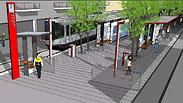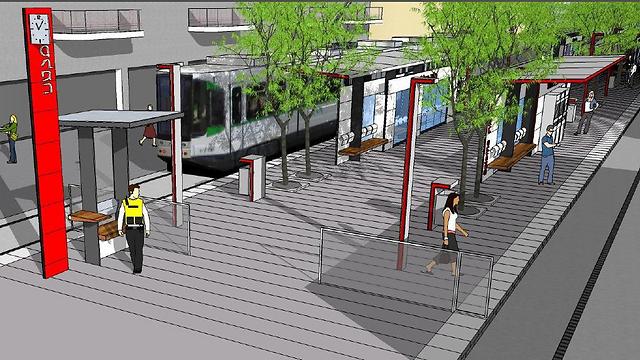
Light rail construction to cripple Jaffa's main thoroughfare
Works are soon to begin on Sderot Yerushalayim and are expected to last for the next four years, shutting the boulevard to private transit and severely interrupting buses.
Along the length of the track, which will stretch three kilometers, will be seven stations up to the border of Bat Yam. The entire street will remain the same level, and most travelling vehicles will be diverted to alternative lanes.
According to the plan, the boulevard along the section between Erlich Street and Eilat Street will be intermittent lane segments parallel to the light rail which will be specifically designated for cars. Hours during which vehicles will be permitted to travel will be decided by the Tel Aviv Municipality. In 2020, NTA, the company responsible for the new line, will conduct the first test drive and at the end of 2021 it intends begin its commercial operations.
Circulation during construction
Many Jaffa residents, many of whom are elderly and many of whom are Arab, claim that they were not aware of the construction plan on the boulevard. Over the last year, three public meetings were held between residents and residents from NTA and the Tel Aviv-Jaffa Municipality and its supplementary authority for Jaffa. Before the beginning of construction, NTA has promised to hold additional meetings and briefings.
In conversations held between residents and senior municipal officials, the former expressed their fears related to the interruption of public transit on Sderot Yerushalayim, despite NTA's assurance that accommodations will be made. Currently, an average of 170 buses per hour travel along the boulevard. The residents also said in a meeting with the city's deputy director general for operations, Ruby Zluf, that they were seriously concerned that forcing private vehicles into Jaffa's narrow side streets would create unbearable traffic jams, especially in addition to the plan to renovate Bloomfield Stadium simultaneously.
Greenery changes
Sderot Yerushalayim was created in 1915 by the Turkish military governor of Jaffa, Hassan Bey, at the height of the First World War. Its original purpose was to connect the Jaffa orchards with the city center, and it was hurriedly constructed by the forced labor of Jewish and Arab city residents. The ficus trees that line the boulevard, some of which are over 80 years old, are now associated with it, and residents' fear of their being cut down has led in the past to petitions and protests.
Twenty-nine of them are to be cut down to allow room for the Salame Station platforms out of 860 on the boulevard. A further four ficus trees that would hinder the light rail's path will be moved at a cost of four million shekels. During the construction, some 50 other kinds of trees will be uprooted, including olive trees and Washingtonia palms. NTA will plant 282 other trees along the sidewalks and platforms.













